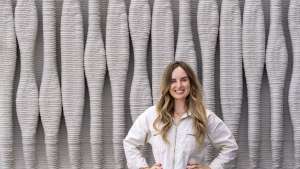San Francisco-based start-up MycoWorks developed a method to grow mycelium into a leather-like material that can be used in the same way as animal skins. Their low-tech alternative involves growing the mushroom-leather out of agricultural waste and by-products in a process that is sustainable, environmentally friendly and uses far fewer resources than farming livestock.
Waste is our greatest and most untapped resource. Companies like MycoWorks are working towards manufacturing methods that rethink the potential of waste. In just two months, the mycelium can grow a piece of material that is as big as a full-scale cowhide, that – from the animal itself – would take around two years to grow and use significant amounts of food and water.
In many ways, this innovative new material offers textile advantages: by manipulating the environment the mushrooms grow in (temperature, light, food, humidity) you can change the texture and look of the material and allow it to grow directly onto zippers and buttons, negating the need for sewing them on later. The materially is also breathable and naturally antibiotic.
We’ve featured other plant-based leather alternatives to leather on Design Indaba, including Pinatex – a material made from pineapples. We’ve also looked extensively at the potential of mushrooms in design: from compostable dresses grown out of living mycelium by Netherlands-based design studio Neffa, to Ikea’s sustainable mushroom packaging, and even biodegradable furniture.
While MycoWorks continues to test the strength and characteristics of the mushroom material, co-founder Philip Ross mentioned in an interview with SciFri that they could soon be making alternative leather jackets.
“We welcome all the vegan biker gangs, come and find us.”







